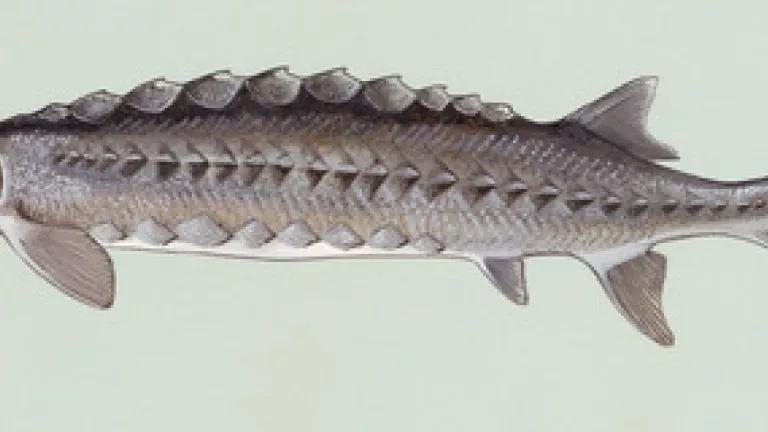Sturgeon Rescue: Under Settlement, Federal Government Will Designate Critical Habitat For Imperiled Atlantic Sturgeon

Just in time for Thanksgiving, Tuesday brought good news for Atlantic sturgeon.
The National Marine Fisheries Service (NMFS) has agreed to a settlement with NRDC that will result in critical habitat designation for Atlantic sturgeon, which is listed under the U.S. Endangered Species Act. The consent decree, filed on 11/25 in federal court in Washington, D.C., is in response to a lawsuit filed by NRDC and Delaware Riverkeeper Network in March 2014. I wrote about this lawsuit in a previous post.
If allowed, Atlantic sturgeon can grow to be enormous, old fish — 600–800 pounds and 14 feet long over a potential 60-year lifespan. But such long-lived leviathans are a thing of the past, thanks to us. In a little more than a century, humans have driven to the brink of extinction a species that has withstood every other challenge over its 85 or so million year old history.
We know many of the ways these creatures have been decimated, including fishing, dams, pollution, dredging, vessel strikes and climate change. But such knowledge has not brought about change, at least not enough for the Atlantic sturgeon. So it now falls on the ESA to rescue this amazing fish.
A key way that the ESA saves species is by protecting their most important habitat. Such protection offers a chance to abate some threats and buffer against others. Once specific geographic areas shown to be essential to conservation and recovery of the species have been designated, the law prevents federal agencies from funding, authorizing or undertaking any activities that will destroy or adversely modify that habitat. In the case of the Atlantic sturgeon, designated critical habitat will — or at least should — encompass key habitat areas in the Atlantic coastal rivers from Maine to Florida that the sturgeon spawn in, in bays and estuaries, and in the Atlantic ocean waters through which adult sturgeon undertake long migrations, up and down the coast.
These critical habitat designations have been some time in coming. NMFS listed the Atlantic sturgeon in 2012, in response to a NRDC petition. At the same time that a species is listed (with a possible one year extension), the law requires that NMFS make a critical habitat designation. It has now been nearly three years.
Under the agreement, NMFS now has one more year to propose a critical habitat designation for the species and a year more to make the designation final. Once these designations — and the resulting protections — are in place, Atlantic sturgeon populations will have a much more hopeful future.
Illustration: U.S. Fish & Wildlife Service

